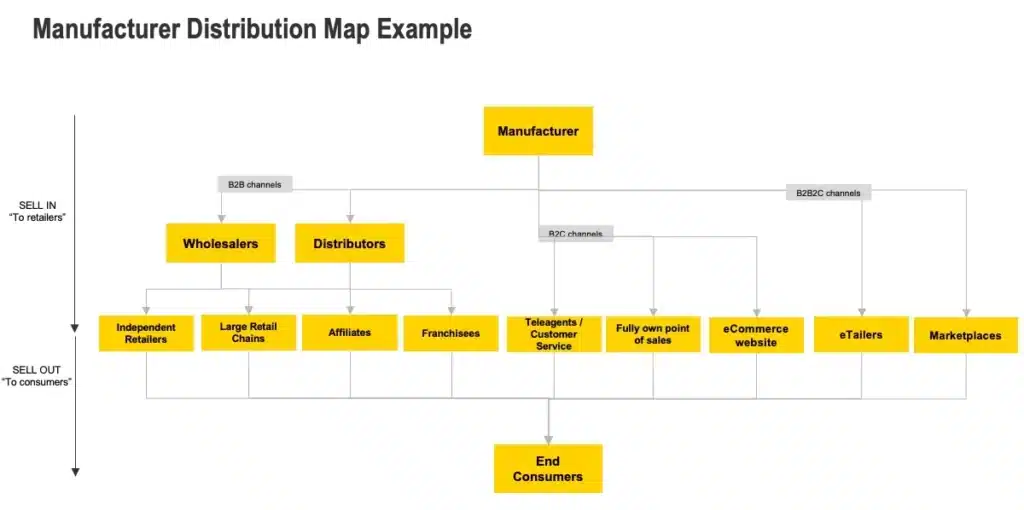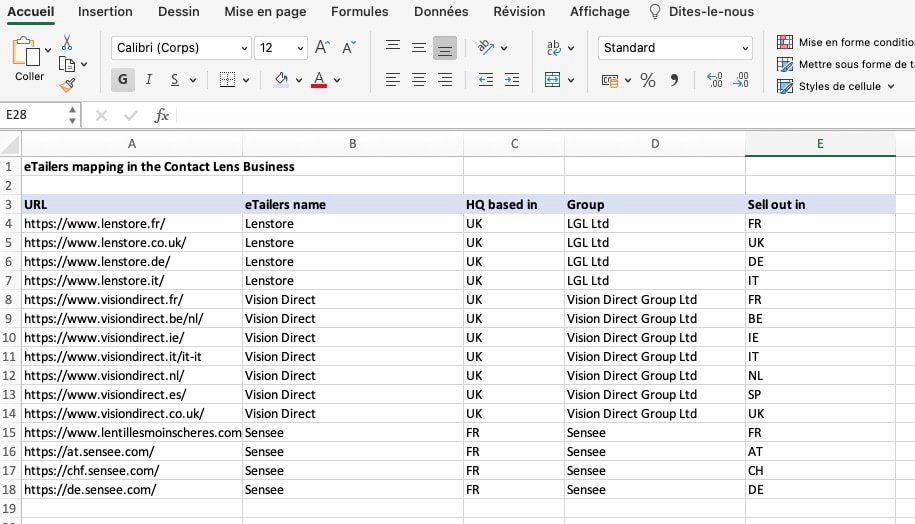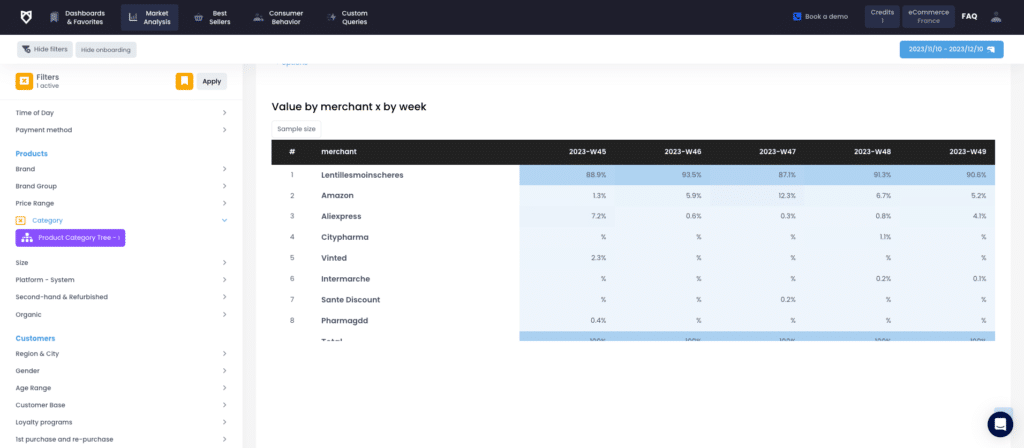You may already be familiar with the term eRetail or eTail. In short, it’s the ability for a manufacturer to sell products and services online via channels that you don’t own.
As a brand and / or manufacturer, you may have chosen a distribution strategy which relies on different channels to sell your products and services to the end consumers :
- Distributors
- Wholesalers
- Direct, also called D2C (Direct-to-Consumer) where you manage your own stores and eCommerce website
- Marketplaces (ex. Amazon, Walmart, Rakuten, Zalando, Bol, Otto…)

Depending on the industry and the type of business you’re running, some channels might be more important than others. You may already have your own eCommerce website and doing your best to increase online sales as you know that this channel has growth and profitability potential.
But the increase in competition, the rise of Customer Acquisition Costs and the needs of skills and expertise makes it difficult to grow as expected.
I’d suggest you look at eRetail as a strategic channel to accelerate and grow your sales.
Here’s a comprehensive guide to build and execute your eRetail strategy.
Determine the size of the price
You already manage distribution channels such as your sales force selling to B2B and traditional retailers. You manage your volume of sales on a daily basis and know which effort to put in.
Opening new channels might be work-intensive, so you’d better know the size of the price before jumping into the execution phase.
Start by mapping your eRetailers
The starting point is to browse the web and map all the eRetailers you find out which are relevant for your industry. Open an excel file, search for your products or your competitors’ products and list all the eCommerce websites you find. Use the flags in the footer section of the eTailer to find out all the countries where they sell.
As an example, in the contact lens industry, a map of eRetailers might look like this :

Some of them might already sell your products by buying them to your wholesalers or distributors.
Some other websites might belong to retail chains you might already do business with.
As you run through this exercice, I’d suggest you also identify whether or not those eTailers belong to the same company ; it’s quite usual a group owns several eCommerce websites across several countries.
Estimate the traffic and sell out volume of each
It’s now time to estimate the business potential of each eTailer. Each might perform differently in terms of traffic acquisition, customer experience and sell out volume.
As you may have understood in the initial chart:
- Sell-in is the volume of sale you do to the eTailers. Once you sold to the eTailers, you’ve made your revenue and the stock is not yours anymore
- Sell-out is the volume of sale that the eTailers sell to the end consumer.
The higher the sell-out, the higher the business potential of the channel or partner.
To do so, I suggest you use the following analytics tools and enrich your excel file
- SimilarWeb.com : Similar web is a tool that estimates the trafic of a given website,
- Profitero.com: the reference in terms of digital shelf analytics,
- Foxintelligence.io: by NeilsenIQ, an important intelligence platform to gain knowledge of your digital market,
- Channel Insight: A great tool to track and optimize your onlien presence,
- Jungle Scout : Quite specific to Amazon through but really usefull to estimate sales volume on that marketplace,
- Data Hawk: another data analytics platform specific to Amazon and Walmart.


At the end of this exercice, you may have a better understanding of each eTailers’ sell-out potential and which one you may focus your efforts on.
Determine the role of the channel compared to the others
Not every channel play the same role nor have the same impact in terms of revenue and profitability.
When building your eRetail strategy, you may determine the role and impact of each channel on the following criteria:
- Audience and acquisition potential : does your target audience uses more eCommerce or traditional retail store to discover and buy your produits ? Maybe some your segment tend to use more a given channel compare to the other ? Leveraging eRetail channels can be a way to expand your target audience, put new eye balls on your brand and products and capture more new customers.
- Product range : Think about your assortment for each channel. Do you have exclusive products on your eCommerce website ? What product range best suit to your eRetail partners ? Again that depends on your target audiences as well as your competitors’ strategy on eRetail.
- Pricing strategy: Obviously, selling in to eRetailers will eat some of your margin. The end customer shouldn’t see any price difference between your eRetailers and your other channel. So eRetailers’ margin has to be considered in your sell-in pricing strategy. Additionnaly, there are many rules, especially in Europe, which prevents manufacturers from influencing the sell-out price. Nevertheless, you can track eRetailers’ pricing strategy, advertise your RRP (Recommended Retail Price) and decide which partner best suits your pricing strategy.
Finally, you may consider any cannibalization risks when planning your eRetail strategy.
Indeed, there’s no point in opening a new distribution channel if you just move revenue from one channel to the other. It’s even a no go if switching channel implies loosing margin (see pricing argument above).
Opening a new channel should imply capturing additional market shares, new customers and incremental revenue.
As an example, this might be interesting to consider eRetail as an acquisition channel, which then feeds your “loyalty engine” within your branded ecosystem. In other words, a new customer discover your brand and makes his first purchase via eRetail and then repurchase via your eCommerce website. Then consider your CAC and your CLTV according to the channel.
Execute your eRetail strategy
At this stage, you might be ready to start executing your eRetail strategy.
Here’s a proposed action plan to get you on the right track:
Action 1. Align your sales & marketing team
Activating an eRetail distribution strategy implies strong collaboration between your sales and Marketing team.
Your sales team need to consider those eRetailers as additional customers that they need to visit, engage with, and consider the same way they consider other channels.
Your marketing team will also play a key role as there’s no eRetail strategy without great brand and product content. eRetailers are keen to get your content (Unique and SEO optimized content even better), your product exclusivity and your brand story telling to animate their website and customer base. Remember that being an online retailer is an everyday war-game ; any differentiating factor will help them get out of the crowd.
Action 2. Consider implementing a PIM
A PIM, which stands for Product Information Management, is a tool that helps to gather and manage product-related content
- Basic product information such as SKU number, dimensions, key caracteristics, technical sheet, etc
- Marketing-related product content : product description, product imagery, talking points, etc
- Experience-related product content : 3D product view, product details, videos, etc
By centralizing your product data within a PIM, you’ll then be able to distribute your product content across all of your channels and thus propose a unified product experience from an omnichannel stand point.
Indeed, end-consumers always browse different touchpoints ; can you image how bad your brand experience would be if they’d see different product content from one touch point to the other ?
Action 3. Meet your customers
Your eCommerce KAM (Key Account Manager) and your Trade Marketing Manager are now ready to book meetings and engage with the eRetailers you’ve identified.
Understand their key metrics : traffic, conversion rate, average basket, revenue, customer data base size…
As well as the metrics specific to your brand : how many SKU do they resell, how satisfied they are with your brand, what role does your product play in their acquisition and loyalty strategy ?
Action 4. Build your Joint Business Plan
A JBP, or Joint Business Plan, is the cornerstone of your eRetail strategy. The objectives are to
- Share your strategy and understand your eRetailr’s strategy
- Identify joint opportunities : for a given category, you may share concerns and willingness to grow with your partner
- Set realistics goals and KPIs for both sides
- Build a joint business & action plan : for example, dear eRetailer, I’ll share $10K marketign fund with you, you will push my products on your home page for 3 weeks and will include my brand and product in 4 email newsletters.
- Meet on a regular basis, track and review your progresses
Action 5. Refine your strategy with transactional / strategic partners
Finally, as you test & learn and grow your eRetail maturity, you may refine your strategy year-on-year, and reconsider which partner
- Is a strategic partner (highly contributes to market share acquisition and retention)
- Is a transactional partner (contributes to volumes at a medium margin)
